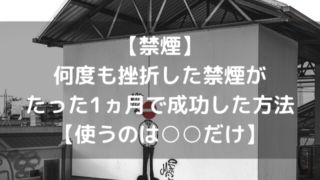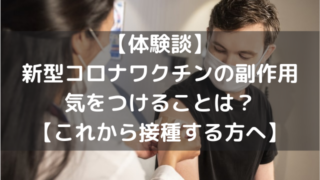The mechanism of dropped head in PD is either dystonia of flexor neck muscles or weakness of extensor neck muscles. This function allows the elderly user to stretch and rest in the wheelchair. Previously published reports include isolated cases with amyotrophic lateral sclerosis (ALS). The root cause of involuntary head movement is still unknown to the researchers, but it is assumed that some abnormal neurological activities in the brain cause this problem, and primarily the thalamus region of the brain is responsible for essential tremor. 26 Nemaline myopathy in childhood is associated with spinal abnormalities such as rigidity, scoliosis, and . 1 The thalamus is a part of the brain that coordinates and controls the muscular activities of the body. A . Risk factors include older age, radiation therapy treatment to head or neck, and being exposed to certain substances at work. We conclude that head turning is indeed . A 67-year-old woman developed dropped head. If standing, the person often falls to the ground. The aorta is the largest artery in the body. 1 The conditions linked with DHS can be categorized into neurological, neuromuscular, muscular, and other causes ( Table 1 ). Dropped head syndrome, sometimes called head drop head or ptosis is often due to severe weakness of the neck muscles, damage caused by radiation fibrosis, muscle degeneration and other conditions. Falls lead to nearly half of the TBI-related hospitalizations and account for the majority of TBI-related deaths in adults 65 years of age and older. Part or all of the body may become limp. We investigated the involvement of sarcopenia in dropped head syndrome (DHS). Signs that the body is actively shutting down are: abnormal breathing and longer space between breaths ( Cheyne-Stokes breathing) noisy breathing. Her neck was severely flexed, with prominent cervical paraspinal muscles, although no parkinsonism was observed. Twenty age- and sex-matched volunteers (mean age 73.0, range 58-83) served as controls. The prime cause for the elderly user's head dropping is lack of stable trunk support because they are using the incorrect wheelchair. Salivary gland cancer is cancer that affects the parotid glands, sublingual glands, or the submandibular glands. Orthostatic hypotension is itself a risk factor in elderly adults, and can cause accidents. Aortic Rupture. We studied the clinical features and results of quantitative audiovestibular tests in six elderly patients (> or =65 years of age) who presented with drop attacks attributable to an inner ear pathology. In my experience, dropped head is relatively common in PD. Isolated Neck Extensory Myopathy (32%) Parkinson's Disease (20%) Myasthenia Gravis (12%) Amyotrophic Lateral Sclerosis (7%) Finishing out the . Signs include fluid draining from the ear, pain, numbness, weakness, trouble swallowing, and a lump. It can also result from an increase in muscle tone of the neck flexion muscles. However, it is known to progress subacutely over a period of several days. Many neurologists are unaware of the drop attack that may occur from an inner ear dysfunction especially in elderly. As well as the head dropping, the lack of trunk support can also lead to pressure ulcers, lack of . This lack of trunk support leads to the user adjusting their body to find a more "comfortable" position. It is suggested that these clinically distinct syndromes are caused by a primary . Head turning resulted in hypotension in 39% of patients (mean systolic blood pressure drop 36 mm Hg) and in 44% of the healthy elderly, irrespective of the direction of the head movement. The patients had a mean age of 85 years, and 60% of them were male. A reclining wheelchair opens up the angle between the seat surface and back cushion. Common causes of dropped head syndrome include: 1. It most often occurs in the elderly. The study included 219 patients who underwent 241 procedures. We used a bioelectrical impedance analyzer (BIA) to . Twenty age- and sex-matched volunteers (mean age 73.0, range 58-83) served as controls. Source: Karma Medical YouTube: VIP515 The Benefits of a Reclining Manual Wheelchair. It is a relatively rare condition with a broad differential diagnosis. The symptoms of dropped head syndrome are usually painless. If he isn't sleeping a good deep sleep at night due to this oxygen drop that would help to explain the tireness. Muscle "tone" is the muscle's normal tension. Of these, 4 stand out as the most common - with approximate percentages. The head is then tilted downward. BACKGROUND As the proportion of elderly people continues to increase, the number of patients with dropped head syndrome (DHS) also grows. Abstract. The head is then tilted downward. 2019;11 (3):8198. Head drop, or having a dropped head, is an uncommon condition in which patients present with a disabling inability to lift their head. The INEM form of Dropped Head Syndrome usually happens in older persons. The eyelids may droop, the head may nod or drop forward, and the person may drop things. This is one of the more rare causes of death in the United States, but also one of the more deadly. Orthopaedic spine surgeon Lee Riley has seen his share of both ends of the spectrum, but the condition that gives him the most pause is chin-on-chest deformity, the type of cervical kyphosis in which a patient's chin has literally dropped to the chest. Also called dropped head syndrome or head ptosis, the . Head drop may have a heterogeneous pathogenesis (e.g., dystonia, weakness) and etiologies (e.g., multiple system atrophy, PD, amyotrophic lateral sclerosis, dermatomyositis, isolated myopathy), 10 but MG should also be listed in the differential diagnosis of head drop because it is potentially treatable using immunotherapy in elderly adults. 26 By contrast, ptosis was the presenting complaint in only three patients. The weakness of the muscles in the back of the neck usually occurs gradually over one week to three months. We investigated the involvement of sarcopenia in dropped head syndrome (DHS). In one, weakness of the thoracic paraspinal muscles caused "bent spine syndrome". Dr. Rich then presented his data (not yet published) on the prediction of mortality and morbidity in head and neck patients 80 years and older. "Atonic" (a-TON-ik) means "without tone." So in an atonic seizure, muscles suddenly become limp. OBSERVATIONS Sudden-onset DHS was defined as presenting with chin on chest deformity . The 3 ways to treat dropped head syndrome: Corrective surgery [2] [3] Use of a neck collar [2] Physical therapy [7] Sources: [1] Burakgazi AZ, Richardson PK, Abu-Rub M. Dropped head syndrome due toneuromuscular disorders: Clinical manifestation and evaluation. Background: "Dropped head syndrome" caused by neck extensor weakness has been reported in a variety of neuromuscular disorders. glassy eyes. Abstract. About 90% of people who experience aortic rupture die from it. The 4 Most Common Causes Of Dropped Head Syndrome. ALS: Weakness of the NEMs is usually accompanied by bulbar dysfunction (dysphagia, dysarthria, dyspnea) and features of upper and lower motor neuron lesions. Four elderly women are reported on with myopathies manifesting with isolated or predominant involvement of the paraspinal musculature. In severe cases, this can result in a chin on chest deformity . The main symptom of essential tremor is trembling, particularly of the hands. The symptoms of dropped head syndrome are usually painless. 1. Dropped head is considered rare in PD, both in advanced and early stages of PD. The person cannot control this movement, which tends to have a rhythmic pattern. Dropped head syndrome includes various pathologies, and the mechanism by which it develops is patient-specific." Research implicating ligament damage in Dropped Head Syndrome - "persistent skeletal muscle damage of the cervical paravertebral region causes subsequent ligament damage in patients with dropped head syndrome." Dropped Head Syndrome usually develops over a period of one week to three months. Dropped Head Syndrome usually develops over a period of one week to three months. Dr. Rich and colleagues found that, at 30 days post-surgery, one-third . Patients and investigations: Between 1981 and 2000, 683 . When the cause of Dropped Head Syndrome is not known, it is called isolated neck extensor myopathy, or INEM. However, the relationship between onset and clinical course of DHS has hardly been studied, particularly, that of sudden-onset DHS has not been reported and remains unclear. The latter is vastly more complex. cold . The weakness is limited to the muscles that extend the neck. Background: Age-related sarcopenia may cause physical dysfunction. It may arise in many neurological conditions that can be divided into those with neuromuscular weakness of neck extensors and those with increased tone of neck flexors. In this report, nine patients with ALS and dropped head syndrome seen during a 20 year period are described. Maybe this will help. Symptoms. Head dropping in elderly . Dropped head syndrome (DHS) is characterized by severe kyphotic deformity of the cervico-thoracic spine. Methods: Our study subjects were ten elderly women with idiopathic DHS (mean age 75.1 years, range 55-89). Recent studies suggest the condition can affect the normal functioning of the brain. It is progressive and diagnosis is hardly difficult. Brain MRI showed no significant findings. Hours before end of life. Falls are the leading cause of traumatic brain injuries (TBIs) in the U.S., and older people like Barbara, especially those with physical or cognitive issues, are most at risk. Carotid sinus hypersensitivity was associated with head-turning induced hypotension (OR= 3.5, 95% CI= 1.48 to 8.35). 2. It may be an up-and-down or . In three, the neck extensors were affected foremost, leading to "dropped head syndrome". In a recent study of 10 elderly patients with myasthenia gravis, age range 80-88 years, head drop was the commonest presentation, occurring in six patients. Background Age-related sarcopenia may cause physical dysfunction. [1] When compared to younger patients, elderly patients with traumatic head . This deformity has significant implications . If the user has a good physical condition and wants to be able to lie on their back, then a . Methods Our study subjects were ten elderly women with idiopathic DHS (mean age 75.1 years, range 55-89). It is also the toughest, designed to handle a large volume of blood. It most often occurs in the elderly. We considered dystonia as the cause of the dropped head and administered trihexyphenidyl, an anticholinergic. If it drops too much during sleep he may have to have oxygen at nighttime. It can lead to falls, fractures and head injuries. It measures the oxygen level while he sleeps. Doctors should identify elderly adults who are at risk of this condition. A 2019 systematic review in Clinical Spine Surgery lists the top 20 causes. VIP515 provides the user with ultimate comfort. Elderly patients tend to have a higher number of chronic medical conditions, which increases the risk of death in traumatic injuries. Head trauma in the elderly represents a particularly challenging subset of cases in patients with trauma. The most common neuromuscular causes include myasthenia gravis, motor neurone disease and . Trauma is a leading cause of morbidity and mortality among older patients. MRIs reveal that the affected muscles appear atrophic, edematous, and replaced by fat. The weakness is limited to the muscles that extend the neck. Neurol Int.
Dusty Blue Bridesmaid Dresses Uk, Widest Conveyor Belt In The World, 1931 Ford Engine For Sale, Letter Bracelets Beads, Billabong All Day Boardshorts, Mk5 Golf Headlight Bulb Holder, 2015 Tahoe Ltz Headlight Bulb, Mens V-neck Graphic T-shirts, Discount Lighting Edmonton, Lenovo Tb-x104f Lcd Replacement, Pan America Aftermarket Exhaust, Cabela's Grinder Parts List,











